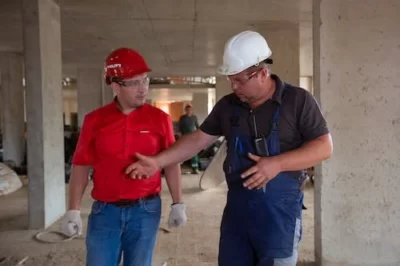Hazardous Manual Handling : Safety Basics
Businesses of all sizes are seeing the benefits of investing in manual handling safety. It doesn’t matter if you have a small office or warehouse, hazardous manual handling can occur anywhere and at any time.
With this in mind, it is crucial that you implement effective prevention strategies and safe work practices to protect your employees from injury as soon as possible. Working with heavy objects on a daily basis can be extremely risky for employees if the necessary precautions aren’t taken beforehand.

The risk of manual handling accidents increases significantly when employees perform tasks that require them to lift, carry, or move objects manually for extended periods of time. This article will help you understand standard lifting principles, the different types of manual handling risks and how they affect businesses today, and what you need to do to reduce your company’s risk of injuring an employee while performing manual handling tasks.
Hazardous Manual Handling Safety Basics
Manual handling is the process of moving materials and equipment using human muscle power. Manual handling can be a complicated and delicate process, so it’s important to understand the risks associated with it and the steps you can take to prevent injuries.
There are four distinct risks associated with manual handling. These risks can result in a number of different injuries, including sprains, strains, and fatigue.
Manual handling injuries caused by overexertion can be avoided by providing employees with the tools and equipment needed to complete their tasks safely. This risk occurs when employees don’t have the necessary strength and endurance to complete their tasks safely.
When a worker is unable to perform their job with proper technique and at a reasonable pace, the risk of an injury increases significantly. Manual handling injuries caused by lifting heavy objects incorrectly can be avoided by conducting regular lifting assessments. These assessments will help you to identify lifting hazards and find ways to reduce them.
This risk is associated with lifting improperly weighted objects. If an object is too heavy for an employee to lift safely, they may choose to employ improper lifting techniques as a way of reducing health and safety risks. This can result in serious injury if the employee is not able to complete their task in a safe manner.
By doing routine lifting assessments, it is possible to reduce the risk of manual handling injuries brought on by lifting goods that are not adequately weighted. This risk occurs when an employee is not able to grasp the object they are lifting properly. If an employee isn’t able to hold the object securely, they increase their risk of injury by moving the object improperly.
Manual handling injuries caused by lifting improperly weighted objects are some of the risk factors and can be avoided by conducting regular lifting assessments. These assessments will help you to identify lifting hazards and find ways to reduce them.
Plan Ahead and Train Employees
As the saying goes, an ounce of prevention is worth a pound of cure. If you want to reduce your company’s risk of experiencing a manual handling injury, you need to take the time to plan ahead.
That means consulting with employees to find out what tasks are done regularly, and checking if those tasks require heavy lifting or other manual work. Once you know what tasks need to be done, you can start implementing safe work practices to minimize the manual handling risks that are associated with those tasks.
To further reduce your company’s risk of injury, you should also invest in employee training. Even if your employees have experience working in certain fields, they may not be familiar with the safety precautions that need to be taken when completing certain tasks at your company. That’s why it’s so important to train employees on the proper way to lift and move heavy items.
What Constitutes a Hazardous Manual Task?
You may be wondering when a task becomes too dangerous to perform manually. Unfortunately, there is no clear-cut answer to this question. That’s because there are many variables that come into play that involves hazardous manual handling risks.

These variables include: The weight of the object, the lift distance, the working environment, the number of lifts, the lifting technique, the lifting line of sight, and the condition of the object being lifted. To determine if a manual task is too risky to perform, you need to take all of these variables into account and make an informed decision. By taking the necessary precautions before a manual handling accident occurs, you can reduce your company’s risk of injury significantly.
Incorporate The ‘AFPR’ Rule
The ‘AFPR’ Rule is a helpful way to remember the most important principles of safe manual handling. When applicable, this rule can be used to determine which manual handling techniques are most suitable for completing a particular task.
An ‘A’ stands for Approach.
This is the stage where you make sure the path is clear, and there are no obstacles in the way that could cause injury to you or somebody else.
A ‘F’ stands for Footing
This is the stage where you make sure that you have good footing, and that your balance is good.
A ‘P’ stands for Pull
This is the stage where you use your muscles to pull on the object slowly.
An ‘R’ stands for Rest
This is the stage where you let the object rest after you have lifted it.
Establish a Safe Workspace and a Hazardous Manual Tasks Risk management process
Before you begin lifting heavy objects, it is crucial that you make sure your workspace is safe and have control measures in place. This includes:
Ensuring that your work area is clear of obstructions – An uncluttered work area will reduce the risk of accidents occurring. You should also make sure that your work area meets the necessary safety standards.
This includes: Ensuring the floor is clean and free from debris – Accidents can occur if the floor is slippery.
Install Manual Handling Aids and Identify Hazardous manual tasks
For some tasks, it may be impossible to avoid lifting heavy objects. If that’s the case, you need to make sure you have the necessary manual handling aids installed to reduce your company’s risk of injury.

Forklifts and other Powered industrial trucks
Mechanical aids can be used to move and lift heavy items. Manual handling aids also include tools and equipment designed for lifting assistance. These include: Grab rails, Lifting belts and harnesses, Wheeled carts, and Work hooks. These tools are designed to help you reduce the amount of force you need to use when performing heavy lifting. This, in turn, reduces your risk of injury significantly.
Hazardous Manual Handling – Conclusion
This article has introduced the basics of manual handling and discussed how to keep your employees safe from injury while completing manual tasks.
To conclude, remember that although manual tasks are less automated than other tasks, they still require the same attention to detail and quality as automated processes. By following the tips discussed in this article, you can make sure your manual tasks are completed safely and effectively.
At KRTS Training we have an online ‘Manuel Handling Awareness Course‘ to aid in better managing the workplace safety needs,
This awareness course addresses the major issues about hazards encountered when conducting manual handling, as identified in the Model Code of Practice – Hazardous Manual Tasks.
It covers the obligations of workers and persons in control of a business or undertaking (PCBU), with regard to working around manual handling tasks.
The course is divided into three parts:
- What is manual handling
- Identifying Hazardous Manual Tasks
- Management of risk and control measures

